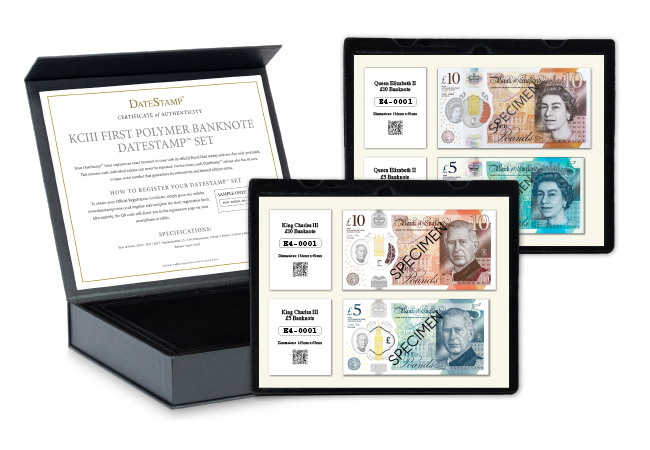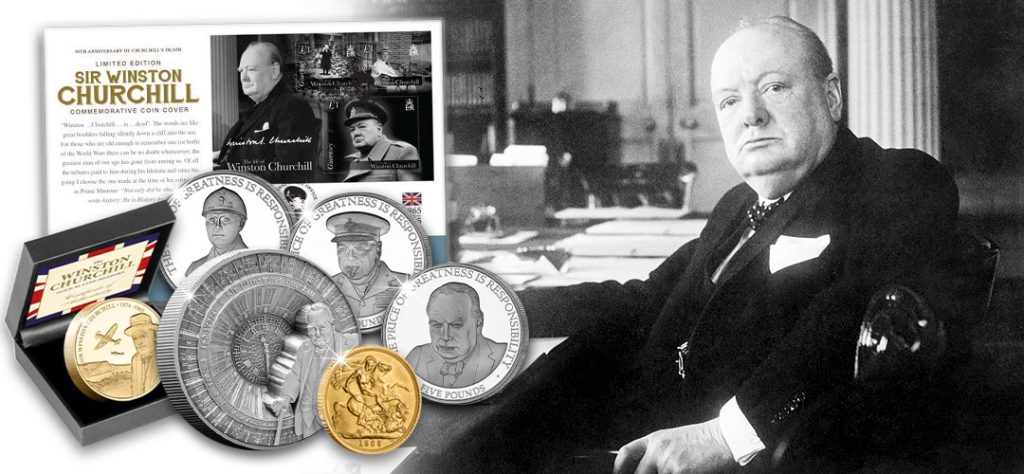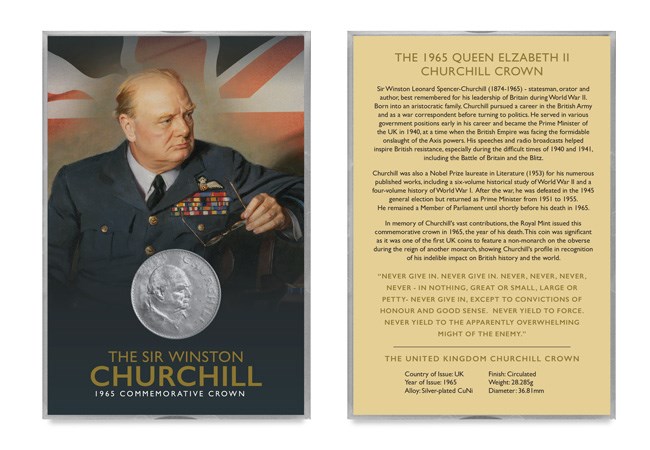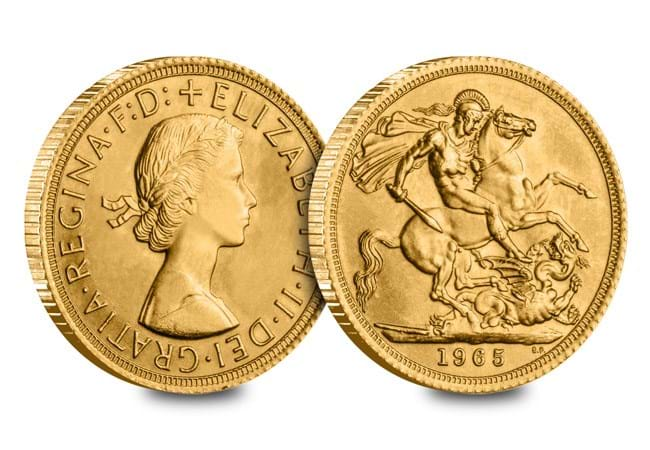Posts Tagged ‘Queen Elizabeth II’
The Evolution of UK Banknotes: From Paper to Precision
The history of banknotes in the United Kingdom is a fascinating journey of innovation, security, and tradition. From the earliest issues to the forthcoming King Charles III banknotes, each phase reflects the technological and cultural shifts of its time.
A Brief History of UK Banknotes
The Bank of England began issuing banknotes shortly after its establishment in 1694. Initially, these notes were handwritten, a far cry from the highly sophisticated currency we use today. By the mid-18th century, partially printed notes were introduced, with the denomination and other details filled in by hand.
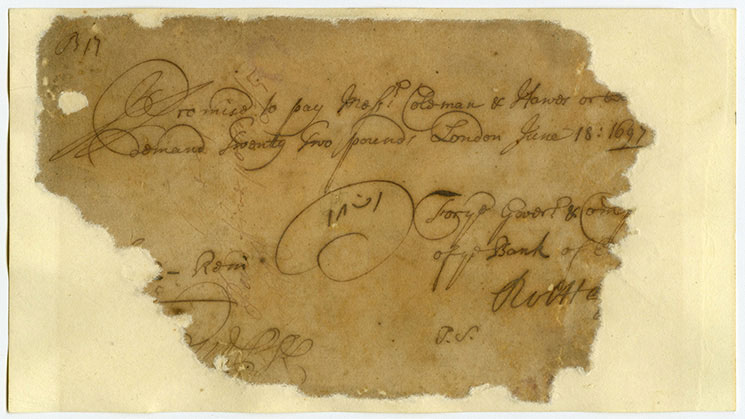
Source: Bank of England website
https://www.bankofengland.co.uk/museum/online-collections/blog/our-earliest-bank-of-england-note
The 19th century brought significant changes with fully printed notes and the introduction of standardized designs to prevent forgery. A pivotal moment in the history of UK banknotes came in 1960 when Queen Elizabeth II became the first monarch to be featured on the Bank of England notes. Her portrait on the £1 note marked the beginning of a tradition of depicting reigning monarchs on the nation’s currency, providing a sense of continuity and national identity.
Security Features: From Simplicity to Sophistication
As technology advanced, so did the sophistication of banknote security features. Early notes relied heavily on the quality of the paper and intricate designs to deter counterfeiters. However, as counterfeiting techniques improved, so too did the security measures.
Modern UK banknotes are a marvel of technology and design. Click on the dots below to explore the key security features:
Introducing the King Charles III Banknotes
In a historic move, the Bank of England is set to release the new King Charles III banknotes on June 5th, 2024. This marks the first time in over 70 years that a new monarch’s portrait will grace the currency, following the reign of Queen Elizabeth II.
The King Charles III banknotes will continue to feature the same high-security features of their predecessors and the new banknotes will initially be available in £5, £10, £20, and £50 denominations. They will circulate alongside the existing Queen Elizabeth II notes, gradually phasing out the older series as they wear out.
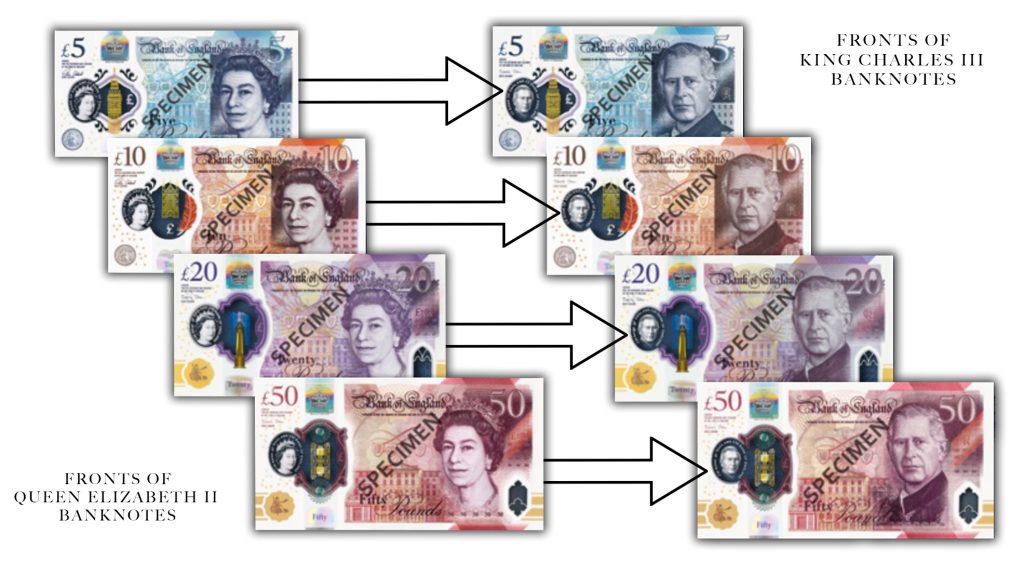
Introducing the DateStamp™ Set: Connecting the Past and Present
To commemorate this historic transition, we are excited to introduce an exclusive DateStamp™ set that brings together the past and the present of UK currency. This unique collection features the Queen Elizabeth II £5 and £10 banknotes alongside the brand new King Charles III £5 and £10 banknotes, each postmarked on the official issue date, 5th June, 2024.
You can now be one of just 2,024 collectors to own this special set.
Click here now to pre-order yours before the official release >>
Celebrating National Winston Churchill Day
On April 9th, we mark National Winston Churchill Day, a moment to reflect on and celebrate one of the most iconic figures in British history.
Click here to see our range of collectables celebrating Sir Winston Churchill
Who Was Sir Winston Churchill?
Sir Winston Churchill was a British statesman and leader known for his role as Prime Minister during WWII, celebrated for his leadership, speeches, and contributions to British and global history.

Celebrate, Commemorate and Collect
To commemorate Sir Winston Churchill and his profound influence, we have an array of collectables available for all enthusiasts. Whether you’re a seasoned collector or new to the world of collecting, National Winston Churchill Day presents a perfect occasion to secure these commemorative pieces and celebrate arguably Britain’s greatest wartime leader.
JUST £15: Special Winston Churchill Piedfort issue
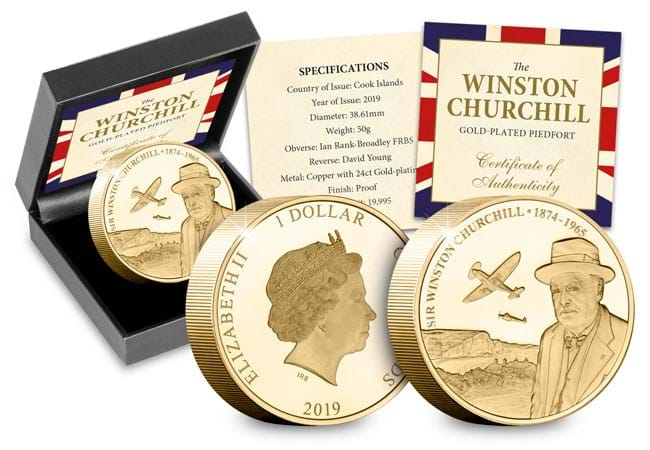
The design of this double thickness Piedfort issue features a specially commissioned depiction of Sir Winston Churchill along with a soaring Spitfire overhead by renowned artist, David Young.
Being double thickness, this coin weighs 50 grams– almost twice as much as the standard specification, and it has also been expertly plated in 24 Carat Gold and struck to a pristine Proof finish.
>>Get your Special Winston Churchill Piedfort issue now by clicking here<<
The Spectacular Sir Winston Churchill 8-Layer Silver Kilo
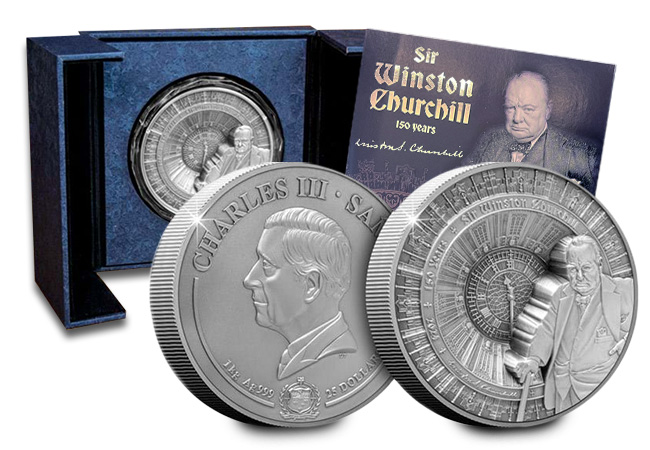
This the spectacular Sir Winston Churchill 8-Layer Silver Kilo Coin.
Each piece has been painstakingly struck from ONE KILO of PURE SILVER to an Antique finish and a cutting edge layered technique has been applied that not only creates a three-dimensional effect but elevates each coin to a league of its own…
>>Click here to secure your Sir Winston Churchill 8-Layer Silver Kilo<<
The 1965 Churchill Crown Collector’s Frame
The 1965 Winston Churchill Crown became immensely popular and continues to be a sought-after addition to any coin collection.
And today, you can secure the stunning silver-plated edition in the popular numismatic frame, to commemorate the 150th anniversary of Winston Churchill’s birth year.
>>Click here to secure your 1965 Churchill Crown Collector’s Frame<<
UK 1965 Winston Churchill Death Year Sovereign
Issued during the year of Winston Churchill’s passing – 1965 – a historically significant Sovereign
The 1965 Sovereign is one of the most collectable classic Sovereigns due to its 22 Carat precious metal quality and significant date.
>>Click here to get your UK 1965 Winston Churchill Death Year Sovereign<<
‘Portraits of a Leader’ Churchill 50th Anniversary Commemorative Coin Cover
*** LAST 53 REMAINING ***

Featuring an official British Isles Miniature Sheet depicting rare photographs of Churchill, the stamps are carefully hand-stamped with a one-day-only commemorative postmark dated 22nd January 2015 – the stamps’ First Day of Issue.
Encapsulated within the cover are three official British Isles £5 Proof Coins that feature finely engraved portraits of Churchill – in his official army uniform during WWI and WW2, and the centre coin shows a recognisable portrait of him as a politician with his trademark bow tie.
>>Click here to secure your Churchill 50th Anniversary Commemorative Coin Cover<<
Winston Churchill Half Crown Collection
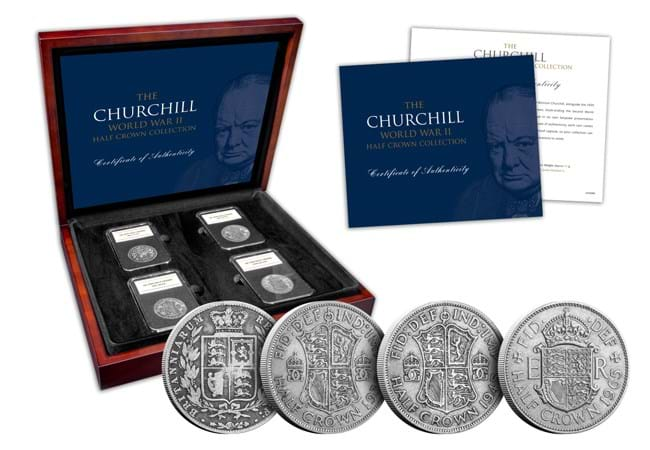
This exclusive set comprises four original Half Crown coins, each representing the unique, historical journey that encompasses both the life of Sir Winston Churchill and pays homage to his leadership during the tumultuous years of World War II.
But, as 2024 marks the 150th anniversary of his birth year, the 1874 Half-Crown has become almost impossible to source.
>>Click here to secure your Winston Churchill Half Crown Collection<<
Celebrating 20 Years of Supersonic History: Remembering the Last Flight of Concorde
Today is a very significant day in aviation history! The iconic Concorde jet, renowned for its supersonic speed and luxury, bid its final farewell on October 24, 2003. This last commercial passenger flight G-BOAG took off from New York City’s John F. Kennedy International Airport, soaring through the skies at twice the speed of sound, and touching down at London’s Heathrow Airport.
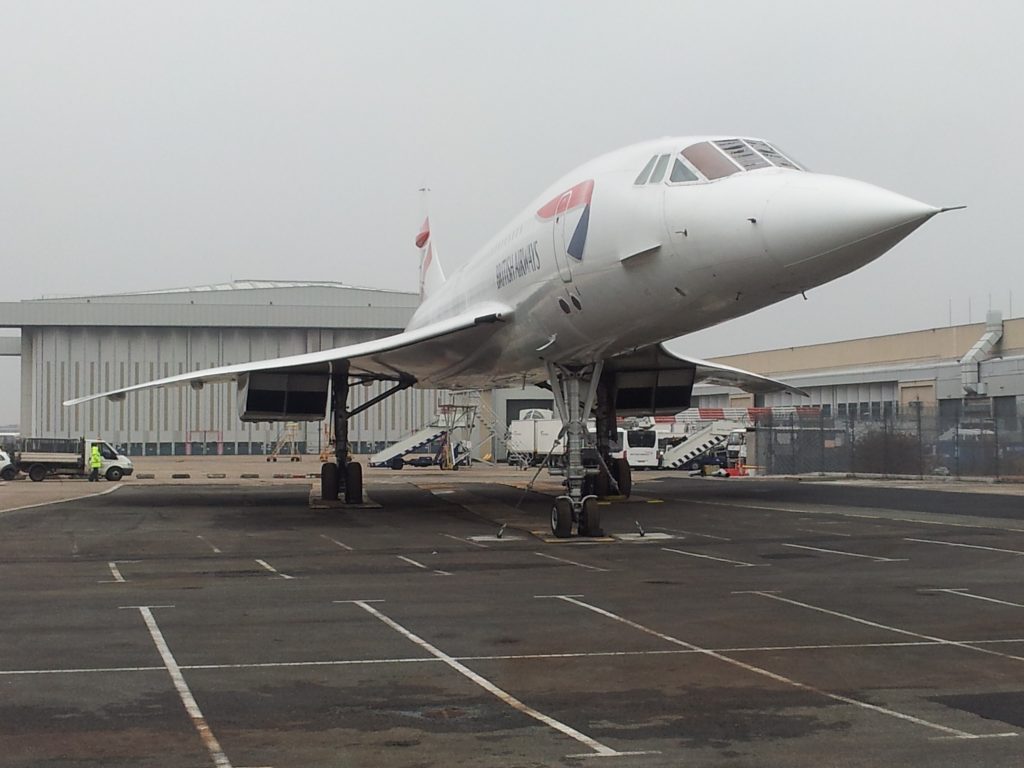
On board were 100 passengers, including famous personalities and an adventurous Ohio couple who had secured two tickets on eBay for a staggering $60,300.
This final journey marked the end of an era, as the typical roundtrip trans-Atlantic fare, which cost around $9,000, was now history. Simultaneously, other Concorde flights embarked on their last voyages from Edinburgh and the Bay of Biscay, drawing large crowds of spectators.
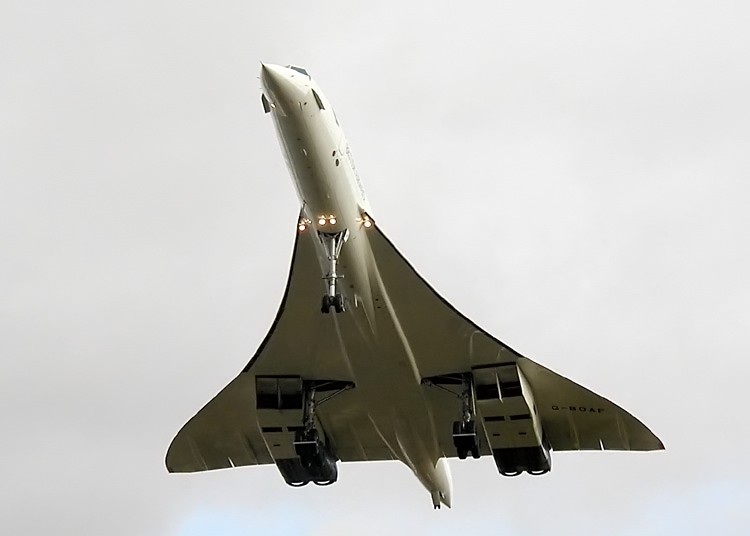
Concorde’s Legacy
Concorde, a marvel of British and French joint innovation, took to the skies in January 1976 for its first commercial flight. It represented a significant leap in aviation technology and design, and its sleek, delta-winged design enabled it to complete the transatlantic journey between New York and London in a mere three and a half hours, cruising at an astonishing speed of 1,350 miles per hour. Concorde was more than just a means of travel, it was an emblem of speed and luxury, captivating the world’s imagination.
Challenges faced by Concorde
Despite its iconic status, Concorde was not without its challenges. Some individuals living under its flight path criticised the substantial noise it generated, disrupting their everyday lives. Tragically, a dark chapter in Concorde’s history unfolded on July 25, 2000, when an Air France jet crashed shortly after take-off from Paris. This catastrophic incident claimed the lives of all 109 people on board, as well as four others on the ground. Following the crash, all Concorde flights were suspended for over a year, with investigations, safety checks, and improvements taking place.
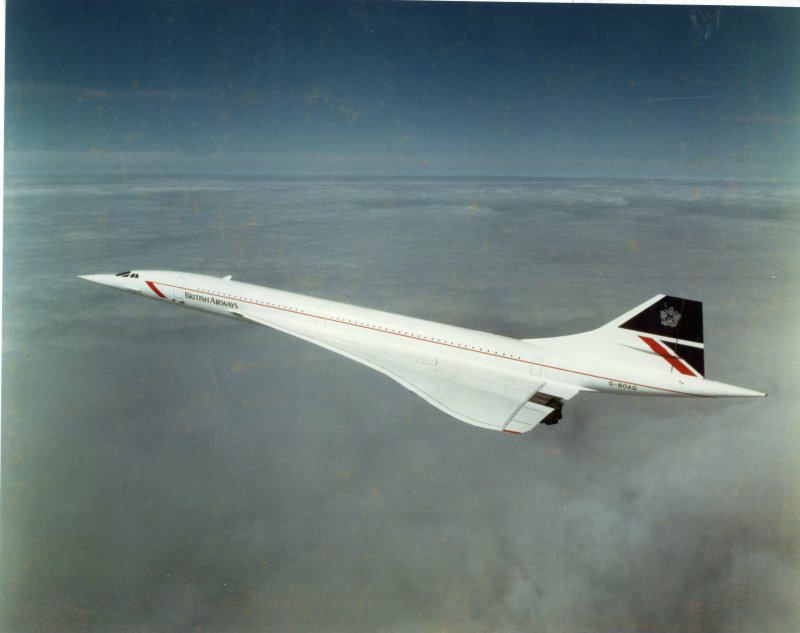
The final commercial flight of Concorde on October 24, 2003, marked the end of an era in aviation. This iconic jet, born from international collaboration, redefined the possibilities of air travel with its incredible speed and luxury. While Concorde had its share of challenges, including noise complaints and a tragic accident, it remains an iconic symbol of human ingenuity and ambition. Concorde’s legacy lives on, reminding us of the thrill of pushing the boundaries of what is possible in the skies.
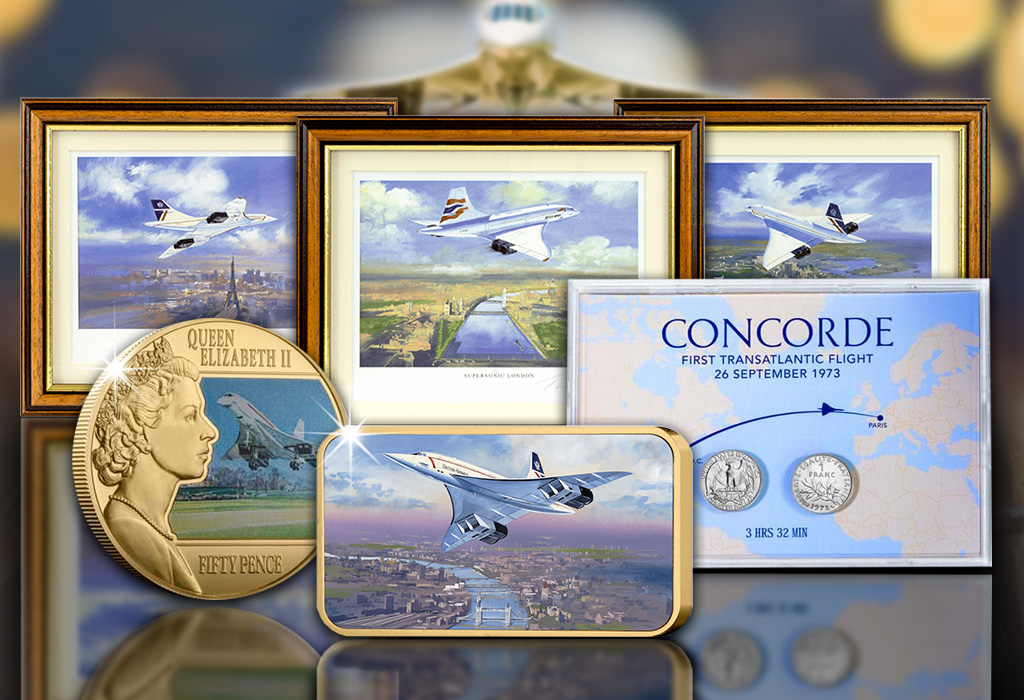
To mark this significant day in aviation history and to celebrate the legacy of this legendary supersonic jet, we have curated a special range over the years for our collectors. Featuring Gold plated coins, Signed framed prints and Limited edition ingots, our Concorde Collectables range has something for everyone – See our Concorde Collectables range by clicking here.

